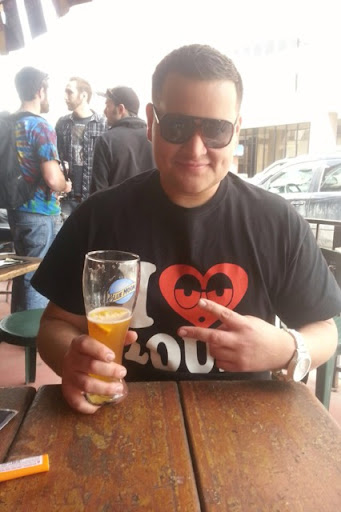Peter L Valentine
age ~73
from Tucson, AZ
- Also known as:
-
- Peter Loring Valentine
- Peter C Valentine
- Pete L Valentine
- Peter L Vaentine
Peter Valentine Phones & Addresses
- Tucson, AZ
- 1960 Cook Ave, Erie, PA 16510 • 8148980231
- Shreveport, LA
- Boise, ID
- Marion, VA
Work
-
Position:Farming-Forestry Occupation
Education
-
Degree:Bachelor's degree or higher
Resumes

Rensselaer Polytechnic Institute At
view sourceLocation:
Tucson, AZ
Industry:
Transportation/Trucking/Railroad
Work:
Ge 2012 - 2016
Lead Engineer Locomotive Cooling
Cbm Specialists 2011 - 2012
Site Technical Coordinator and Analytical Engineer
Motive Power Wabtec 2006 - 2010
Senior Mechanical Engineer
Ge 2002 - 2006
Engine Cooling and Lubrication Project Engineer
2002 - 2006
Rensselaer Polytechnic Institute at
Lead Engineer Locomotive Cooling
Cbm Specialists 2011 - 2012
Site Technical Coordinator and Analytical Engineer
Motive Power Wabtec 2006 - 2010
Senior Mechanical Engineer
Ge 2002 - 2006
Engine Cooling and Lubrication Project Engineer
2002 - 2006
Rensselaer Polytechnic Institute at
Education:
Rensselaer Polytechnic Institute at Hartford
Masters, Mechanical Engineering University of Massachusetts Amherst
Bachelors, Mechanical Engineering
Masters, Mechanical Engineering University of Massachusetts Amherst
Bachelors, Mechanical Engineering
Skills:
Engineering
Management
Manufacturing
Microsoft Excel
Leadership
Project Planning
Customer Service
Six Sigma
Microsoft Office
Project Management
Mechanical Engineering
Composite Structures
Management
Manufacturing
Microsoft Excel
Leadership
Project Planning
Customer Service
Six Sigma
Microsoft Office
Project Management
Mechanical Engineering
Composite Structures

Peter Pen Valentine
view source
Peter Valentine
view source
Peter Valentine
view sourceWork:
Valentine Painting
Retired From
Retired From
Name / Title
Company / Classification
Phones & Addresses
Treasurer, Director
Stewart Industries, Inc
Us Patents
-
Temperature Control For Turbocharged Engine
view source -
US Patent:6604515, Aug 12, 2003
-
Filed:Jan 16, 2002
-
Appl. No.:10/050288
-
Inventors:Gregory A. Marsh - Erie PA
Brian L. Walter - Erie PA
Peter L. Valentine - Erie PA
Mahesh C. Aggarwal - Erie PA
Vinh K. Do - Erie PA -
Assignee:General Electric Company - Schenectady NY
-
International Classification:F02B 3300
-
US Classification:123563, 60599, 123 4131, 123 4133, 123 4144
-
Abstract:A cooling apparatus ( ) and method for a turbocharged internal combustion engine ( ). The combustion air ( ) exiting a turbocharger ( ) is passed over an air-to-water intercooler ( ) then over an air-to-air intercooler ( ) for heat exchange with liquid coolant and with ambient air ( ) respectively. During periods of low ambient air temperature, the combustion air may be directed through a bypass duct ( ) around the air-to-air intercooler, and further, may be heated by the coolant in the air-to-water intercooler. A multi-speed fan ( ) and/or shutters ( ) may be used to control the flow of ambient air across the air-to-air intercooler. A cooling duct ( ) provides a flow of ambient air to the fan motor ( ) during periods of operation when the flow of ambient air over the air-to-air heat exchanger is restricted by the shutters. Coolant exiting a subcooler ( ) has the lowest temperature in the system and is directed to a lube oil cooler ( ) for engine lubricant cooling.
-
Unified Rotary Flow Control Valve For Internal Combustion Engine Cooling System
view source -
US Patent:6647934, Nov 18, 2003
-
Filed:Oct 1, 2001
-
Appl. No.:09/968648
-
Inventors:Gregory Alan Marsh - Erie PA
Peter Loring Valentine - Erie PA -
Assignee:General Electric Company - Erie PA
-
International Classification:F01B 1108
-
US Classification:123 4133, 123563, 13762541, 13762546, 60599
-
Abstract:An enhanced split cooling system and method for a turbocharged internal combustion engine including a liquid cooled turbocharger and an engine liquid coolant jacket , the system comprising a coolant pump for pumping coolant from a coolant storage tank in heat exchange relationship with the engine jacket and turbocharger ; an oil cooler having coolant input and output lines; a valve assembly including a multi-port rotary valve actuated by a single actuator; a first coolant output line connected for conveying coolant from the engine to the valve assembly ; a radiator connected via a second coolant line for receiving coolant from the valve assembly and having a coolant outflow line to return coolant to the coolant tank ; an intercooler operatively associated with the turbocharger for passing the coolant in hear exchange relationship with compressed air in the turbocharger ; a lube oil subcooler coupled by a third coolant flow line to receive coolant from the radiator and having a coolant outflow line selectively couplable through the valve assembly to the oil cooler and the coolant tank ; an intercooler subcooler coupled by a fourth coolant flow line to receive coolant from the oil subcooler and having a coolant outflow line selectively couplable through the valve assembly to the coolant tank and the intercooler ; and the valve assembly being independently operable for selectively directing coolant flow through the radiator and subcoolers and the oil cooler and intercooler as a function of engine operating temperature.
-
Method For Eliminating Fuel Use During Dynamic Braking
view source -
US Patent:6803734, Oct 12, 2004
-
Filed:May 31, 2002
-
Appl. No.:10/160867
-
Inventors:Ajith Kuttannair Kumar - Erie PA
Peter Loring Valentine - Erie PA -
Assignee:General Electric Company - Erie PA
-
International Classification:H02P 312
-
US Classification:318375, 318254, 318362, 318382, 318151, 318152, 318153
-
Abstract:A dynamic braking system for a vehicle, the system comprising an engine, an alternator, a plurality of alternating current (AC) electric traction motors, each coupled in driving relationship to a respective one of a plurality of driven wheels, a plurality of power inverters where each of the traction motors has excitation windings coupled in circuit with a corresponding one of the plurality of power inverters, a fuel-free dynamic braking controller, a fuel-free dynamic braking transfer switch located between one of the plurality of traction motors and the one of the plurality of power inverters in circuit with the corresponding one of the plurality of power inverters, wherein the one of the plurality of traction motors in circuit with the corresponding one of the plurality of power inverters that is separated by the fuel-free dynamic braking transfer switch does not generate and does not consume power, and wherein the fuel-free dynamic braking controller commands one of the plurality of power inverters that is separated by the fuel-free distributed braking transfer switch from one the traction motor to convert direct current (DC) power into AC power for use by the vehicle.
-
Method For Eliminating Fuel Use During Dynamic Braking
view source -
US Patent:7034480, Apr 25, 2006
-
Filed:Sep 2, 2004
-
Appl. No.:10/933180
-
Inventors:Ajith Kuttannair Kumar - Erie PA, US
Peter Loring Valentine - Erie PA, US -
International Classification:H02K 17/32
H02K 23/68
H02K 27/30
H02K 7/10
H02P 3/00 -
US Classification:318362, 318371, 318375
-
Abstract:A method for reducing engine fuel consumption of an electro-motive vehicle during braking, the method including steps for providing an engine for the vehicle, generating primary electric power at a primary electric power generator connected to the engine, generating primary electric power at a secondary electric power generator connected to the engine, operating a plurality of electric traction motors each coupled in driving relationship to a respective one of a plurality of driven wheels to propel the vehicle during motoring operations and to generate electricity upon braking operations of the vehicle, electrically connecting a braking switch between the traction motors and the primary electric power generator, applying braking, closing the braking switch, and transmitting power generated by the traction motors to the primary electric power generator to operate as a motor to rotate the engine and drive the secondary electric power generator to power the auxiliary equipment without fueling the engine.
-
Locomotive Engine Inlet Air Apparatus And Method Of Controlling Inlet Air Temperature
view source -
US Patent:63279800, Dec 11, 2001
-
Filed:Feb 29, 2000
-
Appl. No.:9/515459
-
Inventors:Gong Chen - Erie PA
Gregory A. Marsh - Erie PA
Ronald H. Till - Fairview PA
Peter L. Valentine - Erie PA -
Assignee:General Electric Company - Schenectady NY
-
International Classification:B61C 502
-
US Classification:105 2605
-
Abstract:Automatic control of the temperature of the inlet air being supplied to the engine (12) of a locomotive (10) in order to optimize the performance of the engine (12) under a variety of ambient air temperatures and pressures. One or more valves (38) is utilized to control the flow of warm air from the engine compartment (14) into the air inlet path (20). The position of valve (38) is controlled by controller (42) in response to at least one of an ambient air temperature signal T. sub. A, an ambient atmospheric pressure signal P. sub. A, and an inlet air temperature signal T. sub. I. The temperature of the air flowing through the warm air flow path 28 may be controlled by selecting from among a plurality of possible inlets (30, 32, 50). By varying the volume and temperature of the air flowing through the warm air flow path (28), the temperature and density of the air supplied at the engine inlet (18) may be moderated across a broad range of ambient air temperatures and pressures.
-
Enhanced Split Cooling System
view source -
US Patent:60985763, Aug 8, 2000
-
Filed:Feb 12, 1999
-
Appl. No.:9/249516
-
Inventors:Theodore John Nowak - Erie PA
Gregory Alan Marsh - Erie PA
Peter Loring Valentine - Erie PA
Mahesh Chand Aggarwal - Erie PA
Wayne Arthur Rhodes - Luray TN
Geoffrey Daniel Smith - Jackson TN -
Assignee:General Electric Company - Erie PA
-
International Classification:F01P 1108
-
US Classification:123 4133
-
Abstract:An enhanced split cooling system for a turbocharger and an engine includes an oil cooler, a three-way valve assembly and a four-way valve assembly for controlling the flow of coolant, and radiators and subcoolers, for controlling coolant temperature. The valve assemblies are independently controllable to direct coolant through an oil cooler and a turbocharger intercooler either directly from the engine if the oil cooler and intercooler require heating or from the radiators and subcoolers if the oil cooler and intercooler require cooling. Depending upon the engine operating temperature, the valve assemblies can be configured to establish at least three different coolant processing modes.
-
Flexible Composite Coupling
view source -
US Patent:55519180, Sep 3, 1996
-
Filed:Feb 28, 1992
-
Appl. No.:7/843671
-
Inventors:Peter J. Jones - Erie PA
Peter L. Valentine - Marion VA
Duncan J. Lawrie - Erie PA -
Assignee:Lawrie Technology Incorporated - Girard PA
-
International Classification:F16D 350
-
US Classification:464 80
-
Abstract:A flexible composite coupling (20) wherein a wound filament or roving is wound between two attachment members (22) and (24) and is fully or partially impregnated with a resin matrix such as urethane to form a flexible element (32). The attachment members (22) and (24) include radially extending flanges (26) and (28) which have a radiused periphery (30) formed on them, over which the flexible element (32) is wound. The flexible element (32) diverges inwardly from the flanges' (26) and (28) radiused periphery (30) to form opposed diaphragm portions (34) and (35) of the flexible element (32) which smoothly meet at a minimum diameter (36). Hoop winds (38) of a material with high strain capacity wrapped about this minimum diameter (36) pretension the filaments or roving within the flexible element (32).
-
Locomotive Cooling System
view source -
US Patent:62306685, May 15, 2001
-
Filed:May 22, 2000
-
Appl. No.:9/576626
-
Inventors:Gregory Alan Marsh - Erie PA
Brian Lane Walter - Erie PA
Peter Loring Valentine - Erie PA
Mahesh Chand Aggarwal - Erie PA
Abul Kalam Mohammad Shariful Islam - Ottawa, CA -
Assignee:General Electric Company - Schenectady NY
-
International Classification:F01P 510
-
US Classification:123 4144
-
Abstract:A cooling system (10) for a turbocharged locomotive engine (12) including a two stage intercooler (20) for conditioning the combustion air (16). A first coolant loop (32) includes a first stage intercooler (38), the engine coolant passages (22), a radiator (34), a first tank (36), an oil cooler (30), and a first pump (40). A second coolant loop (42) includes a second stage intercooler (44) a subcooler (48), a second tank (46), and a second pump (50). A fluid connection is provided between the first coolant loop (32) and the second coolant loop (42) to provide heat there between during conditions of overcooling of the second coolant loop (42). Flow control valves forming a portion of first coolant loop (32) may be embodied in a single rotor-sleeve flow control valve (130).
License Records
Peter L Valentine
Address:
Erie, PA 16510
License #:
PE040843R - Active
Category:
Engineers
Type:
Professional Engineer
Googleplus

Peter Valentine

Peter Valentine

Peter Valentine

Peter Valentine

Peter Valentine

Peter Valentine

Peter Valentine

Peter Valentine
Plaxo

Peter Valentine
view source
Peter Valentine
view sourceFrom working with executives on keynote presentations, to developing creative elements for events, to scripting banter for celebrities like William Shatner or... From working with executives on keynote presentations, to developing creative elements for events, to scripting banter for celebrities like William Shatner or the Flight of the Conchords, Peter Valentine is a writer/creative director who brings a wide range of creative talents and disciplines to all...
Youtube
Classmates

Peter Valentine
view sourceSchools:
Ward Melville Senior High Stony Brook NY 1971-1975
Community:
John Lohman, Rick Barnes

Peter Valentine
view sourceSchools:
North High School Worcester MA 1959-1963, Burncoat High School Worcester MA 1962-1966
Community:
Julie Ford, Anne Gallant, Linda Vincent, Robert Loosemore, Albert Cormier, Nancy Taylor, Michael Rice, Kevin Stiles, Diane Pearson, Jackie Thurber, Sandy Christman

Peter Valentine
view sourceSchools:
Northeast Elementary School Brentwood NY 1960-1966, North Middle School Brentwood NY 1966-1969
Community:
Barbara Lucas, Mark Finn, Carmine Gary, Carol Lehrian, Ana Velazquez

Peter Valentine | George ...
view source
Island Trees High School,...
view sourceGraduates:
Peter Valentine (1994-1998),
Bill Legrand (1984-1988),
Kelly Lapietra (1981-1985),
Mitch Menaker (1970-1974),
Beatrice Marin (1963-1967)
Bill Legrand (1984-1988),
Kelly Lapietra (1981-1985),
Mitch Menaker (1970-1974),
Beatrice Marin (1963-1967)

North Middle School, Bren...
view sourceGraduates:
Peter Valentine (1966-1969),
Cecilia Alvarez (1961-1963),
Blanca Diaz (1994-1998),
Joseph Marano (2001-2005)
Cecilia Alvarez (1961-1963),
Blanca Diaz (1994-1998),
Joseph Marano (2001-2005)

Notre Dame Elementary Sch...
view sourceGraduates:
Peter Valentine (1952-1956),
Mel Villicana (1958-1962),
Florence Cummings (1944-1948),
Laura Gramada (1984-1988)
Mel Villicana (1958-1962),
Florence Cummings (1944-1948),
Laura Gramada (1984-1988)

George Washington High Sc...
view sourceGraduates:
Peter Valentine (1960-1964),
Gus Souris (1943-1947),
Jean Leitch (1955-1959),
Bud Alexander (1962-1966),
David Chichester (1951-1955)
Gus Souris (1943-1947),
Jean Leitch (1955-1959),
Bud Alexander (1962-1966),
David Chichester (1951-1955)

Peter Valentine
view source
Peter Valentine
view source
Valentine Peter
view source
Peter Valentine
view source
Peter Valentine
view source
Peter Valentine
view source
Peter Valentine
view source
Okpalaojiego Peter Valent...
view sourceFlickr
Myspace

Peter Valentine Fine Arts
view sourceLocality:
Midlands, United Kingdom
Gender:
Male
Birthday:
1906
Get Report for Peter L Valentine from Tucson, AZ, age ~73













